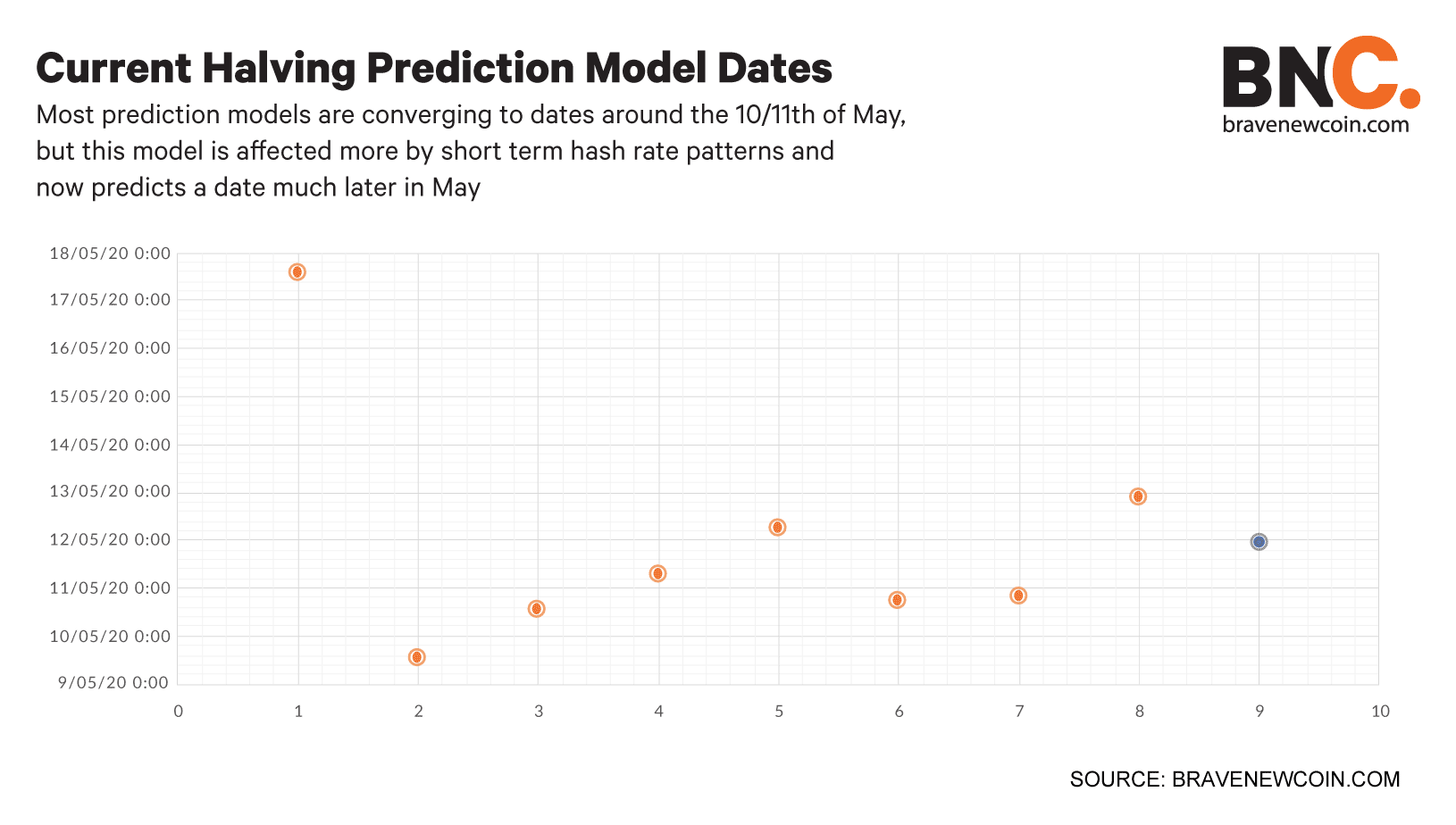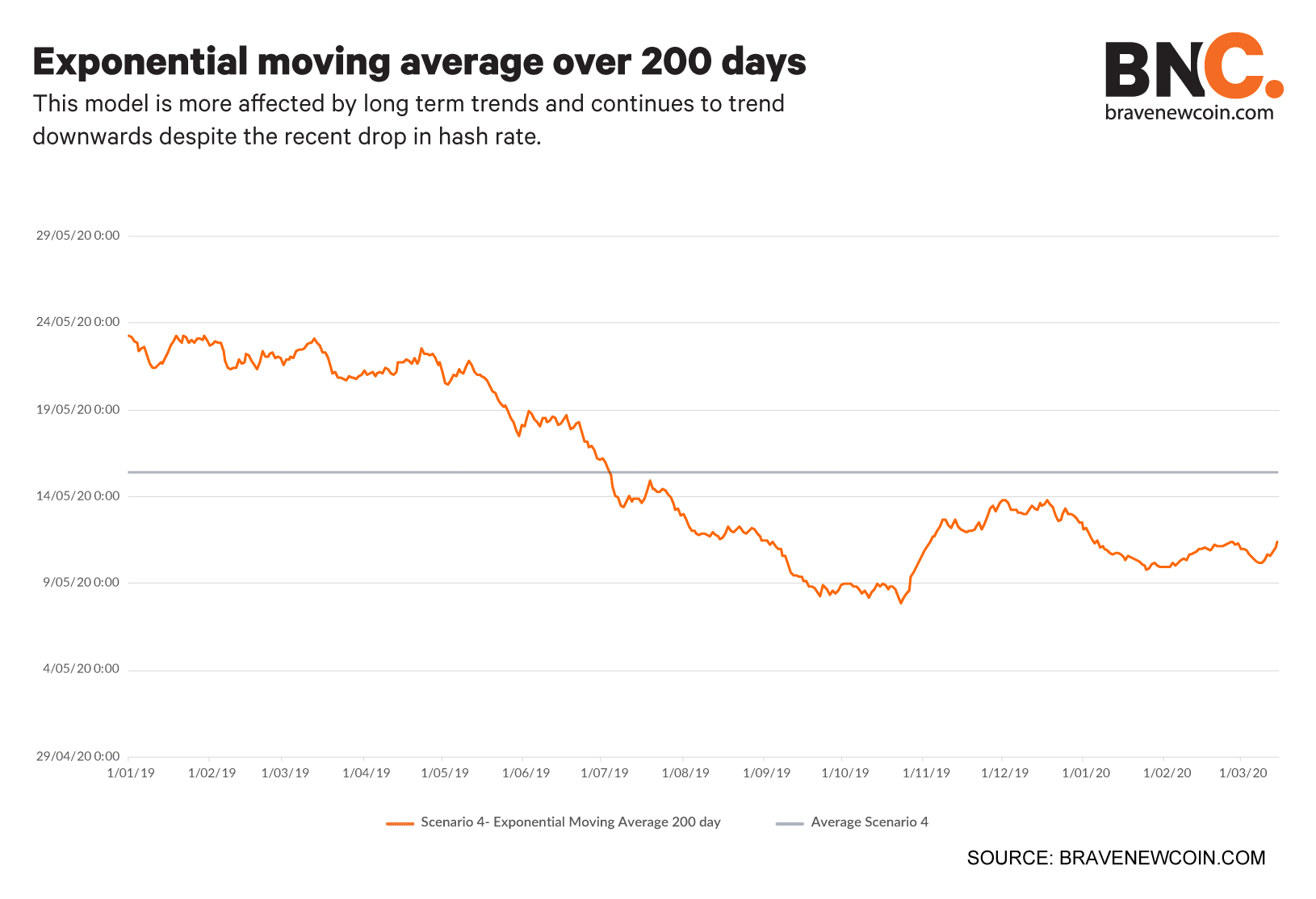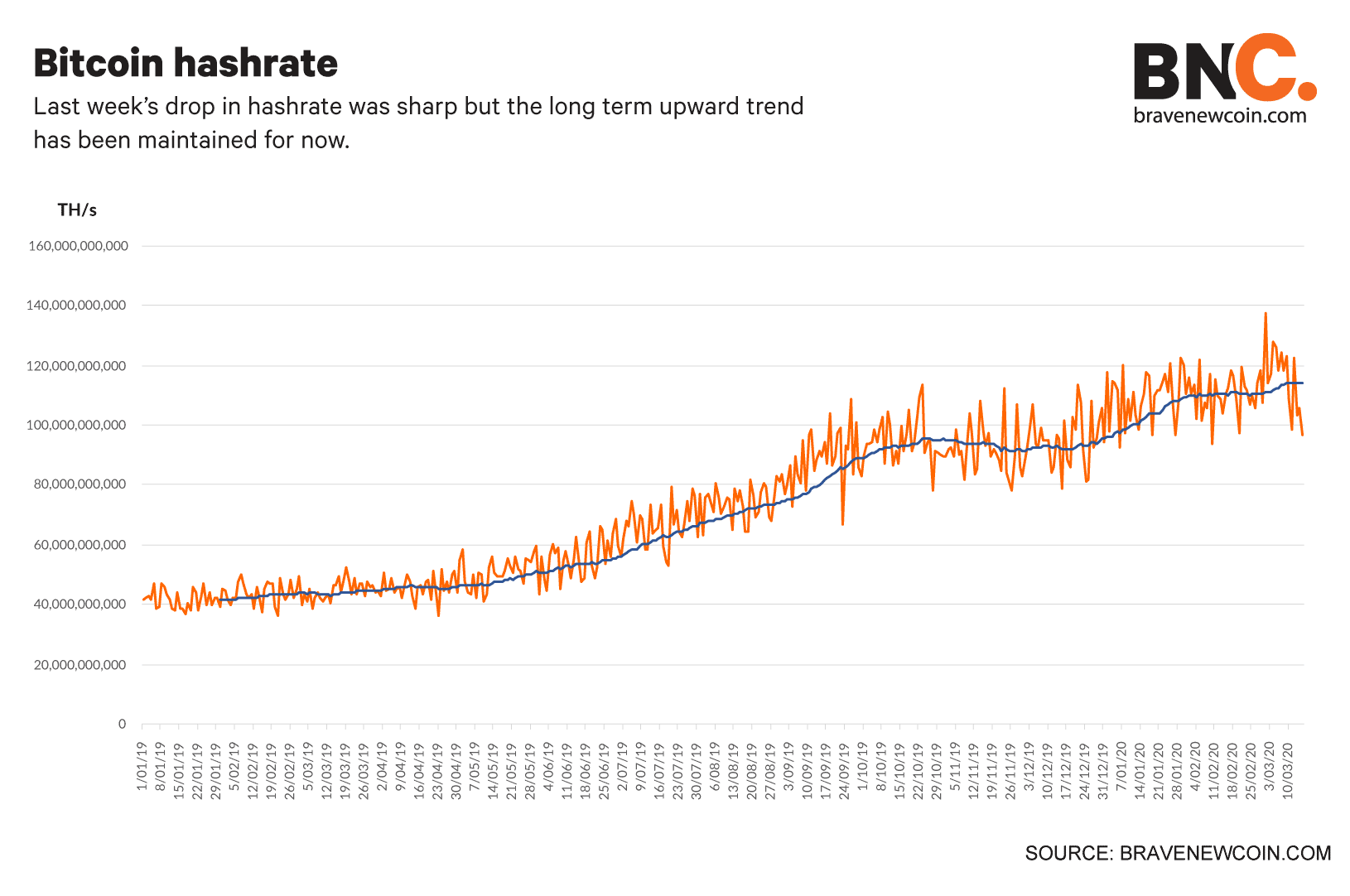Brave New Coin Weekly Bitcoin halving countdown update: 19th March
What is the Halving?
Bitcoin is a decentralized digital currency that enables instant payments to anyone, with no central authority. The Bitcoin network is secured by miners which are specialized computers that use a consensus mechanism called “proof of work” to verify each block of bitcoin transactions.
The miner that verifies each block is rewarded for their work with newly-created bitcoins. This ‘block reward’ is how new bitcoins are released into the system. A new block of transactions is added to the Bitcoin blockchain approximately every 10 minutes. The current reward is 12.5 bitcoins per block.
An average of 144 blocks are mined every day which means approximately 1,800 new bitcoins are generated every 24 hours.
The number of new bitcoins that are created via the block reward is reduced by half every four years. This is known as the Bitcoin Halving. The next halving will be the third halving, and the current block reward of 12.5 bitcoins will reduce to 6.25 bitcoins.
This week in the halving countdown
The Bitcoin network’s hashrate has dropped sharply following ongoing price turmoil in the BTC markets.
This week’s consolidated (across all Brave New Coin prediction models) Bitcoin block reward having prediction date is 14/05/2020 01:41
The consolidated prediction date from a week earlier was 08/05/2020 14:09 This week’s predicted date is 131 hours and 32 minutes later than last week’s. Each model is recalculated every day. The consolidated block halving prediction date has been pushed back quite significantly.
The Bitcoin network’s hashrate dropped rapidly last week and the network is now using 10% less electricity. The smoother, more long term leaning EMA and SMA 200 day models continue to suggest that the halving will occur later than predicted last week. The other models, however, have been heavily influenced by a sharp drop in hash rate as we move closer towards the actual expected halving date.
Major miner F2Pool commented on the sudden drop in hash rate on March 17th. They suggested that the fall was a delayed reaction by miners to the recent drop in the price of Bitcoin. The US$ value of Bitcoin has dropped 46% since February 14th, from trading just above ~US$10,200 to the ~5450 level. This has been a large shock driven by the COVID-19 black swan world event that has heavily affected global economies and all markets.
“There is always a time lag for hashrate to decrease due to hosting contracts, and time required for operators to turn off a large number of machines,” said F2Pool. Bitcoin’s hashrate growth has been surprisingly strong in recent times in spite of the dropping prices that should be squeezing mining profitability and pressuring miners to take rigs offline. Post the Bitcoin block reward halving, miner profitability will be further squeezed because miners will then be earning less btc per block they confirm.
These factors imply that that hash rate will fall further in the short run, with miners choosing to switch off machines earlier than they would in normal circumstances pre-halving, because the price drop is wrecking mining profitability earlier than expected. As hash rate slows, this will also slow average daily block times and therefore push back expected halving dates predicted by the BNC models.
If price does turn around, however, hash rate should also follow it eventually. This will depend on the containment of the Coronavirus and macro headwind drivers such as policy adjustments and other incentives made by major central banks.
https://bravenewcoin.com/data-and-charts/bitcoin-halving
Halving prediction dates

Average predicted block halving date 01/03/2020 across the 8 different models= 11/05/2020 22:44
Average predicted block halving date the week before across the 8 different models= 08/05/2020 14:09
Difference= 80 hours & 35 minutes later
Date Convergence charts
Scenario 1: Average Daily Block Time
This is the average execution time of all Bitcoin blocks mined the day before. This model estimates the number of days left until the next halving, by multiplying the average daily block time by the number of blocks left to be mined before the next halving. Using this measure we calculate the timestamp for next halving.
This model is now consistently predicting dates above its historical average. The very recent slump in hash rate is heavily affecting this model as it only considers blocks mined the day before

Average predicted halving date (first observation 01/01/2019)= 12/05/2020 15:45
Predicted halving date on 08/03/2020= 24/05/2020 19:56
Scenario 2: Cumulative Average Block Time
This is the cumulative numerical average of execution time of all Bitcoin blocks mined till the present day. In order to remove the long gap between the initial block execution, the average block time between those blocks is taken as 600 seconds. We estimate the number of days left until the next halving, by multiplying the cumulative average block time with the number of blocks left to be mined before the next halving. By using this measure we calculate the timestamp for next halving.
This model has flipped upwards again, it now seems likely to begin predicting dates later than 10/05/2020

Average predicted halving date (first observation 01/01/2019)= 8/05/2020 7:36
Predicted halving date on 08/03/2020= 09/05/2020 03:36
Scenario 3: Simple Moving Average Block Time 50 day
This is an arithmetic moving average of all block times calculated by adding the average block time of blocks executed each day for the last 50 days of the period. This is a lagging technical indicator which applies an equal weight to all observations over the period for determining if the block time will continue to have the same trend or reverse it. If the simple moving average points up, this will explain the increase in the number of blocks execution which means the halving date will arrive faster than expected. If it is pointing down it means that the blocks executed will decrease on a daily basis and the halving date can move further away.
The predictions put out by this model continue to converge steadily towards a date on the morning of 09/05/2020.

Average predicted halving date (first observation 01/01/2019)= 13/05/2020 18:36
Predicted halving date on 01/03/2020= 09/05/2020 15:17
Scenario 4: Exponential Moving Average block time 200 day
This is a type of moving average where a greater significance is given to the most recent average block times. This provides good signals on crossovers and divergences from the historical average block time. This is a lagging technical indicator. When the average block time crosses the moving average block time, the large changes are expected in the average block time, where the trend changes direction. As EMA provides higher weight to the recent daily average block time than on older data, it is more reactive to the latest block time changes.
This model is more affected by long term trends and continues to trend downwards despite the recent drop in hash rate.

Average predicted halving date (first observation 01/01/2019)= 15/05/2020 08:56
Predicted halving date on 01/03/2020= 11/05/2020 04:03
https://bravenewcoin.com/data-and-charts/bitcoin-halving
Network fundamentals
Last week’s drop in hashrate was sharp but the long term upward trend has been maintained for now.

Average Daily Hashrate 09/03/2020- 15/03/2020= 109,801,817,357 Th/s
Average Daily Hashrate the week before= 121,040,984,537 Th/s
Percentage change= -9.29%
There are less than 105,000 BTC left to be mined before the halving

Bitcoin left to be mined before the halving as of 15/03/2020= 102687.5
OhNoCrypto
via https://www.ohnocrypto.com
Aditya Das, Khareem Sudlow
